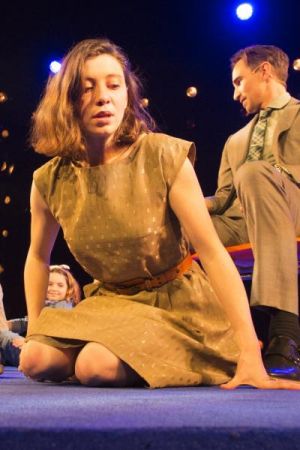A Doll’s House
Henrik Ibsen’s 1879 play A Doll’s House was the most controversial play of the 19th Century. This was primarily due to the ending in which the main female character, Nora, decides to leave her comfortable bourgeois home, husband and children.
The play has been seen as a proto-feminist play, such as is the case here with this State Theatre Company of SA production, but Ibsen’s original play is about more than just one thing. It deals with a woman, Nora, a wife and mother, who due to the arrival of a relative stranger (so Ibsen) is finally caught up in the lies and deceit that she has manufactured and created herself.
This, rather than the ‘feminist’ issue, is what makes the play truly topical and relevant to the modern world, complemented by the success of Dear Evan Hansen, the 2017 Tony Award winning musical that covers the same territory.
The production by State Theatre SA is not Ibsen’s play; it is a free adaptation by Elena Carapetis and set somewhere in modern day Australia. In itself it is perfectly fine, basically following Ibsen’s original play, but with significant differences, such as making the characters representative of a ‘twenty-something’ generation; far too young. These differences are partly why the production is unmoving, lacking in complexity, subtlety and depth. The result is more like watching a ‘soap-opera’; a good ‘soap-opera’, but ‘soap-opera’ nonetheless, set in a stunningly theatrical world.
 Too often the theatricality of the production, thrilling though it may be, distracts from the human drama. For example, the dramatic purpose and function behind Nora’s Act 2 ‘tarantella’ in the original play is highly suspenseful and dramatic, as Nora, playing for time, dances as if her life depended on it – which it does. In this production the tarantella is transposed to the end of the 1st Act and is more in line with a sex-tease dance, with no suspense and tension.
Too often the theatricality of the production, thrilling though it may be, distracts from the human drama. For example, the dramatic purpose and function behind Nora’s Act 2 ‘tarantella’ in the original play is highly suspenseful and dramatic, as Nora, playing for time, dances as if her life depended on it – which it does. In this production the tarantella is transposed to the end of the 1st Act and is more in line with a sex-tease dance, with no suspense and tension.
In the frantic energy to be continually innovative, the creative team behind this slick and stylish production has not necessarily been innovative but has unintentionally distorted the original work so much that it is confusing and reductive, unsatisfying and unmoving.
Geordie Brookman’s staging is vivid, clever, imaginative and theatrical. Geoff Conham’s set is impressive, but more like a setting for a rock concert than the comfortable bourgeois home that Nora ultimately leaves. Neither, however, impressive as they are, assist the play and overall production. It is a telling fact that something is amiss when the set changes and vignettes become more interesting than the actual scenes.
The whole production is far too simplistic – good women suffering under bad men, etc. The actors are relatively fine, but their youthfulness, like the production itself, undermines the true depth of Ibsen’s work. Furthermore, the excessive scale of the production forces the actors to work within a relatively melodramatic and excessive ‘soap-opera’ range of expression. It is a tell-tale sign that an actor is emotionally not connected when they ‘sing’ their lines; and there was an awful lot of singing of lines and striking sentimental attitudes with whiny voices.
In this confusing and disappointing mish-mash of theatrical styles and effects there is, however, one standout performance. Rashidi Edward, a recent graduate of the excellent acting course at the Adelaide College of The Arts, is terrific as Nora’s nemesis, Krogstad. As a shining representative of the College of The Arts it puts to utter shame those who (rumour has it) may wish to destroy this excellent course.
Tony Knight
Photographer: Andy Rasheed.
Subscribe to our E-Newsletter, buy our latest print edition or find a Performing Arts book at Book Nook.

